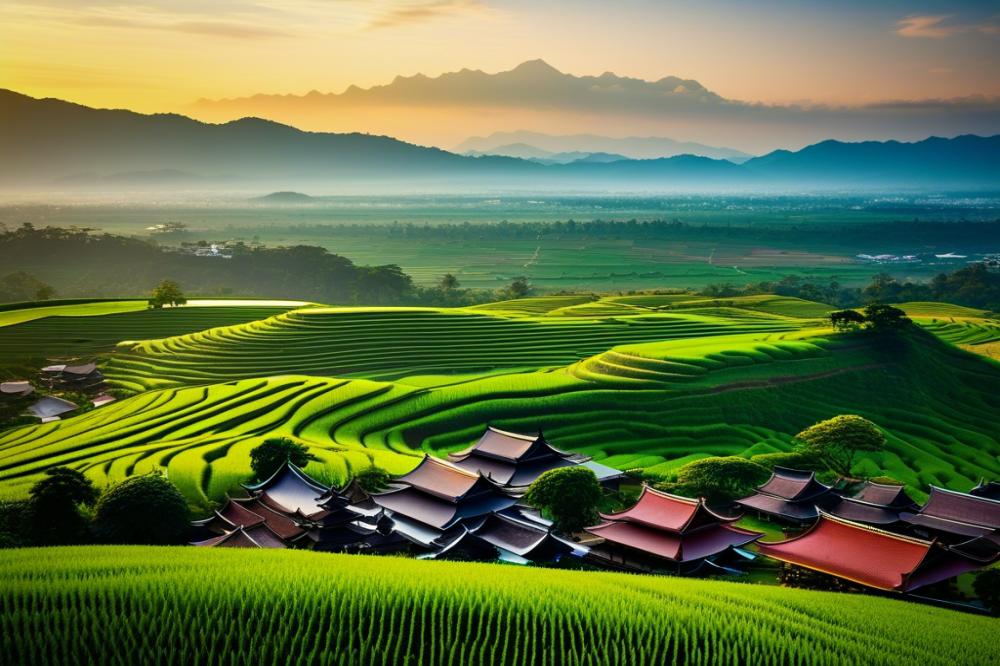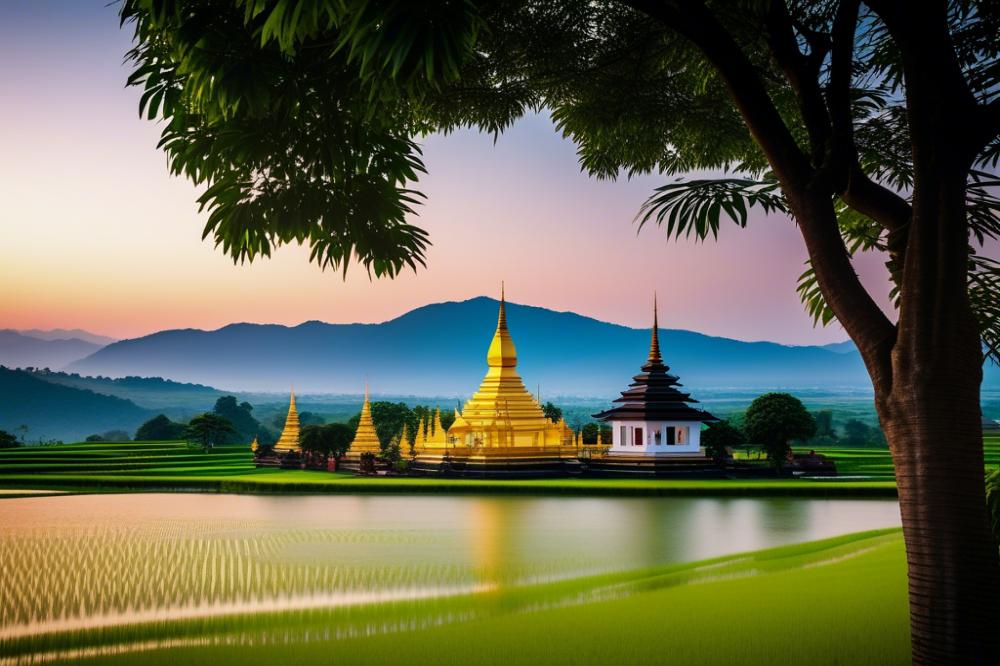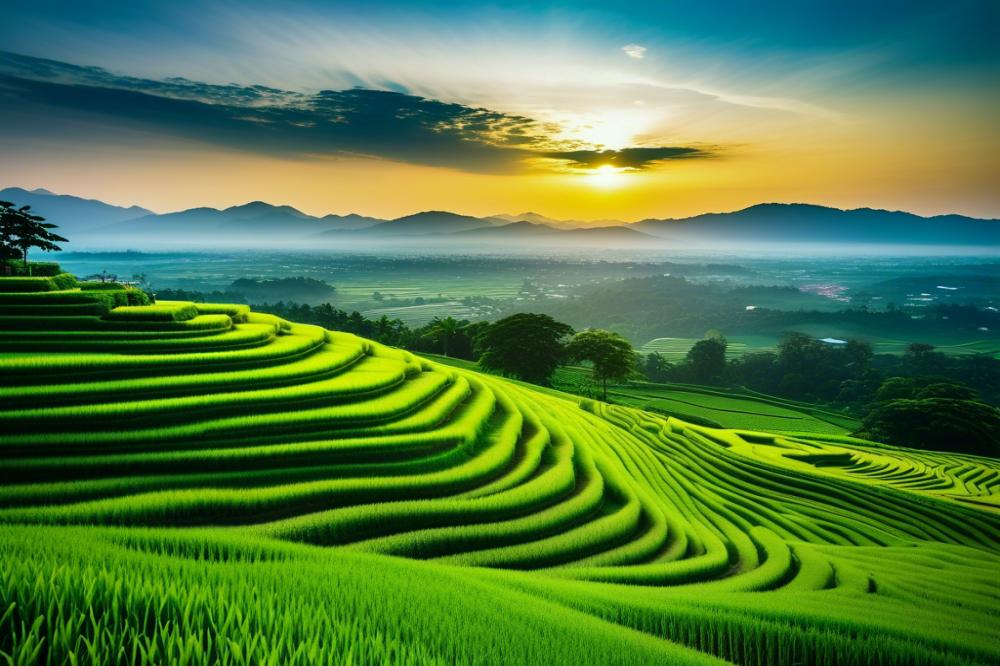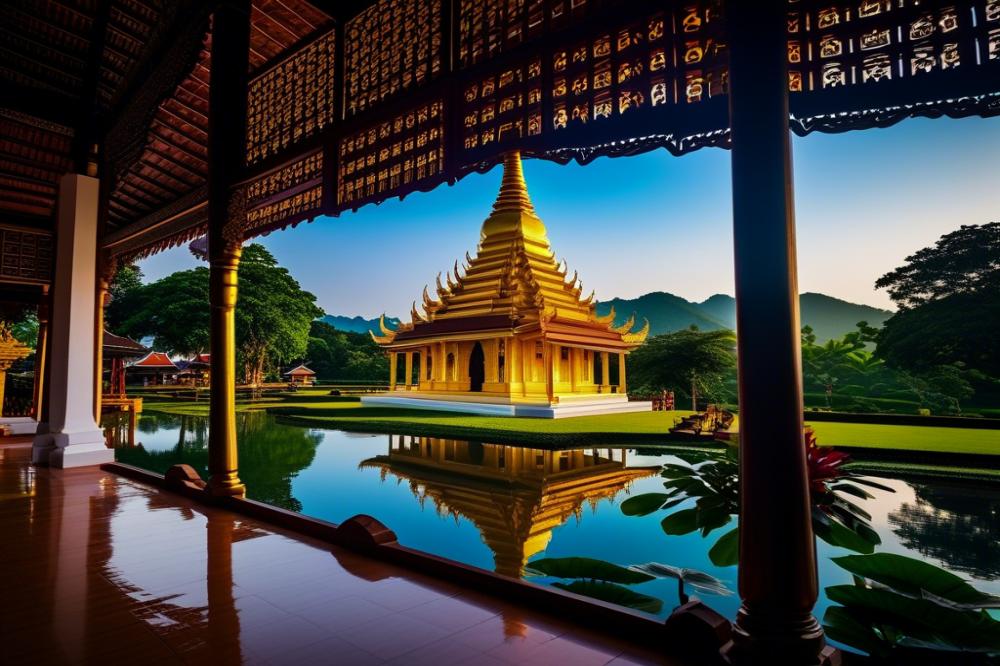Introduction
Chiang Rai stands out as a captivating holiday destination in Thailand. Known for its breathtaking landscapes and rich cultural heritage, it draws visitors from around the globe. Travelers often marvel at the stunning views, delicious cuisine, and friendly locals. However, one of the city’s main attractions is its incredible temples.
Temples play a crucial role in Chiang Rai tourism. These sacred places are not just for worship; they also attract admirers of art and architecture. Visitors explore Wat Rong Khun, the famous White Temple, and find themselves mesmerized by its beauty. Other sites like Wat Phra Kaew and Wat Huay Pla Kang offer a glimpse into the rich history of this region. These Buddhist temples tell stories of culture, devotion, and artistry.
Exploring ancient temples is more than just sightseeing. It is a journey into the heart of what Chiang Rai represents. Each temple stands as a testament to the skills of artisans who created these masterpieces. While you admire the intricate details and majestic structures, you also appreciate the deep spiritual significance they hold. This travel guide to the ancient temples of Chiang Rai offers a chance to connect with the past and to learn more about the traditions that shaped this vibrant area.
Chiang Rai temples


When exploring Chiang Rai, visitors cannot miss the stunning Buddhist temples that fill the area. These sacred places serve as more than just historical sites. They are vibrant hubs of local culture and spiritual life. Each temple carries its own story, reflecting the unique heritage of the region.
Overview of Chiang Rai temples and Their Significance
Wat Rong Khun, commonly known as the White Temple, captivates many with its dazzling white exterior and intricate designs. Art and architecture come together in a way that feels truly magical. Visitors often find themselves in awe of the creative details that symbolize purity and enlightenment. Another important site is Wat Phra Kaew, which holds a special significance for locals. It was once home to the Emerald Buddha, a treasured artifact in Thai culture. Each building in these temples tells a part of a larger story, anchoring them deeply in history.
Role of Temples in the Local Culture and Community
Temples play a crucial role in the daily lives of the people in Chiang Rai. They are places for worship, where locals come together to practice Buddhism. Events such as festivals and ceremonies take place here, fostering community bonds. Wat Huay Pla Kang is a prime example. This temple features a giant statue of the Goddess of Mercy, Quan Yin, which draws visitors from near and far. Here, people find solace, guidance, and connection to the past.
Travelers often include these temples in their Chiang Rai tourism itinerary. Learning about the cultural heritage behind each temple enhances the overall journey. As visitors marvel at their beauty, they can also appreciate the values they represent. These sites invite personal reflection and offer a deeper understanding of Buddhist teachings. This journey will leave a lasting impression, encouraging mutual respect and appreciation for diverse cultures.
Wat Rong Khun


Description of Wat Rong Khun, the White Temple
Wat Rong Khun, often called the White Temple, stands out in Chiang Rai. This Buddhist temple impresses visitors with its bright white exterior. Its design symbolizes purity and cleanliness. Artists created this structure as a modern masterpiece. It contrasts sharply with many traditional temples in Thailand. People often flock to see its striking beauty and unique features. The temple is not just a place for prayer; it is also a work of art.
Art and architecture features of Wat Rong Khun
Art and architecture at Wat Rong Khun are bold and imaginative. Many sculptures and decorations tell stories from Buddhist teachings. The famous bridge leading to the temple symbolizes the journey from suffering to enlightenment. Visitors marvel at the intricate details and designs. The temple’s walls are adorned with mirrors that reflect sunlight. This shining effect creates a magical atmosphere. Various other colors may appear in the artworks, adding depth to the scene. Artists have incorporated many symbolic elements throughout the site. It is a feast for the eyes and a pure delight for anyone interested in art.
Cultural and spiritual significance
Wat Rong Khun holds great cultural and spiritual importance. Local people view it as a sacred place dedicated to Buddhist values. The temple serves as a bridge between tradition and modern expression. Travelers learn about the deep meaning behind each element and artwork. This place also plays a big role in Chiang Rai tourism. Visitors not only come for beauty but also for reflection. The temple inspires feelings of peace and thoughtfulness. For those who respect cultural heritage, Wat Rong Khun is a must-see. It offers a profound experience that lingers in one’s memory long after visiting.
Wat Phra Kaew


History and significance of Wat Phra Kaew
Wat Phra Kaew, a jewel among Chiang Rai’s temples, has a rich history. It dates back to the 14th century. This sacred place played a big role in the early days of Buddhism in Northern Thailand. The temple once housed the Emerald Buddha, a highly treasured relic of Buddhism. Although the statue is now in Bangkok, the temple continues to hold great significance. Many visitors come to learn about its past and its impact on the region. It serves as a reminder of the area’s religious and cultural evolution.
Architectural style and important relics
The architectural style of Wat Phra Kaew stands out. Intricate carvings and vibrant colors decorate the temple buildings. Architectural design combines traditional Thai styles with unique elements. One of its striking features is the large, ornate chedi that towers overhead. Visitors often marvel at the beautiful murals that tell stories from Buddhist teachings. Important relics, like the ancient Buddha statues, draw attention from tourists. Each piece has a story, adding layers to the experience. The creative designs inspire all who come to see them, making it a highlight in Chiang Rai tourism.
Role in Chiang Rai’s cultural heritage
Wat Phra Kaew contributes greatly to the cultural heritage of Chiang Rai. This temple serves as a gathering place for the local community. Events and ceremonies often take place here, bringing people together. It’s more than just a site for tourists. Locals participate in prayers and celebrations that have existed for generations. The temple reflects the city’s identity and its deep-rooted traditions. Just like Wat Rong Khun and Wat Huay Pla Kang, it showcases the blend of art and spirituality. Travelers who visit will not only see its beauty but also feel its spirit. Truly, this temple remains an essential part of the region’s story.
Wat Huay Pla Kang
Overview of Wat Huay Pla Kang and its grandeur
Wat Huay Pla Kang stands as one of the most remarkable temples in Chiang Rai. Its grandeur captures the attention of both locals and tourists alike. Visitors often marvel at the impressive architecture and vibrant details scattered throughout the temple grounds. The temple has become a prominent symbol of the region’s rich cultural heritage. Its intricate carvings and colorful designs showcase the beauty of Buddhist temples. Each corner reveals a different story, inviting exploration and reflection. This sacred place serves as a peaceful escape from the bustling world outside.
Significance of the large Guanyin statue
One cannot visit Wat Huay Pla Kang without noticing the massive Guanyin statue. Towering over the landscape, it represents compassion and mercy. This stunning figure stands 25 meters tall and draws people in with its serene expression. Many believe that visiting the statue brings good luck and blessings. As a focal point of the temple, the Guanyin statue symbolizes hope and guidance for devotees. It also acts as a reminder of the importance of kindness in daily life. This element reinforces the temple’s role in spiritual wellness and community bonding.
Cultural activities and events at the temple
Cultural events at Wat Huay Pla Kang contribute to the vibrant atmosphere. Festivals and ceremonies are held regularly, attracting people from all walks of life. During these gatherings, visitors experience traditional music and dance. Art and architecture are celebrated, showcasing the inherent creativity of the culture. Tourists often participate, creating a sense of connection with the local community. A travel guide often highlights these events, emphasizing their significance within Chiang Rai tourism. Each occasion offers a glimpse into the beliefs and practices of the region’s people. Engaging in these activities enhances the overall experience of visiting this historical site.
Other Notable Temples in Chiang Rai
Chiang Rai is home to many fantastic temples beyond the famous Wat Rong Khun. Each one offers its own charm and stories for visitors. Many tourists seek to explore these sacred places. Understanding their significance deepens the appreciation of the culture and history.
Wat Phra Kaew
This temple is famous for housing the Emerald Buddha. It was once a revered statue in Thailand. Wat Phra Kaew reveals the artistic influence of ancient times. The temple architecture showcases intricate designs that reflect the rich cultural heritage of the region. Visitors often find peace here, surrounded by beautiful gardens and stunning murals.
Wat Huay Pla Kang
Only a short drive from the city center, this temple features a giant statue of Guan Yin, the Goddess of Mercy. Many call it the “Big Buddha” because of its impressive height. This site stands out with its awe-inspiring art and architecture. Locals and tourists alike admire the detailed carvings and bright colors. It serves as a reminder of compassion and wisdom in life.
Exploring More Temples
Other lesser-known Buddhist temples can be found throughout the area. Each holds its own stories and unique artistry, waiting to be discovered. When travelers immerse themselves in these historical sites, they gain a deeper understanding of Thailand’s spiritual and cultural landscape. These experiences foster a greater appreciation for the region’s heritage.
For those who seek unforgettable experiences, the temples of Chiang Rai offer much more than picturesque views. Learning about their history and meaning creates lasting memories. Engaging with local traditions enriches the journey. Visiting these remarkable sites is essential for anyone wanting to truly embrace the essence of Chiang Rai tourism.
Travel Guide to Chiang Rai Temples
Visiting the temples in Chiang Rai offers a glimpse into the rich cultural heritage of Thailand. Many tourists find themselves captivated by the stunning art and architecture found at these sacred places. As you plan your visit, it’s essential to know some practical tips to enhance your experience.
Best Times to Visit and Local Customs
The best times to explore are during the cool and dry months from November to February. It’s comfortable and pleasant for wandering around various historical sites. Show respect when visiting Buddhist temples; modest clothing is crucial. Cover your shoulders and knees. This simple gesture demonstrates respect for the local customs.
Visitors should also remove their shoes before entering any temple building. Quiet is appreciated here, as these are spiritual locations. Feel free to ask local monks about their traditions. Many appreciate sharing their knowledge with curious travelers.
Transportation Options and Accessibility
Getting around Chiang Rai can be quite simple. Tuk-tuks are a popular choice for short distances, and they are fun to ride. Renting a bicycle or a scooter offers an adventurous way to explore the temples at your own pace. Consider joining a local tour, which can provide valuable insights about sites like Wat Rong Khun and Wat Phra Kaew.
Public transportation is available, but schedules may vary. If you decide to use buses, double-check with locals for accurate times. Many temples are close to each other, making walking a great option. Travelers can enjoy the scenery and interact with friendly residents along the way.
Some temples, like Wat Huay Pla Kang, are slightly further out. However, they are still accessible by taxi or ride-sharing apps. Always ask about the fare before you ride to avoid surprises.
Final Thoughts on Chiang Rai Temples
Visiting the temples of Chiang Rai offers travelers an experience like no other. These sites hold tremendous historical and cultural value. Each temple, including the famous Wat Rong Khun and the revered Wat Phra Kaew, tells a story steeped in tradition and artistry. Exploring these treasures allows visitors to feel a deep connection to Thailand’s rich heritage.
Take a moment to appreciate the brilliant colors, intricate designs, and spiritual atmosphere that surround these landmarks. It’s not just about seeing beautiful buildings; it’s about understanding the culture and beliefs that shaped them. Engaging with local customs and traditions can provide insights that a regular vacation might not offer.
Don’t miss the opportunity to step into a world where the past meets the present. Wander through the serene grounds, and let the peaceful energy wash over you. Interact with local artisans, and observe how they preserve their craft. By doing so, you contribute to the appreciation and continuation of these ancient practices.
These historical sites serve as a reminder of the beauty in diversity and the importance of preserving history. Embrace the chance to expand your worldview and enrich your travel experience. Visiting the temples of Chiang Rai is not simply a fun activity; it is a journey into the heart of a vibrant culture.
In the end, make the most of your adventures in this enchanting part of Thailand. Discovering the temples is more than sightseeing; it is an invitation to connect, learn, and grow. The value of such experiences resonates long after the visit is over, creating lasting memories that will stay with you.



